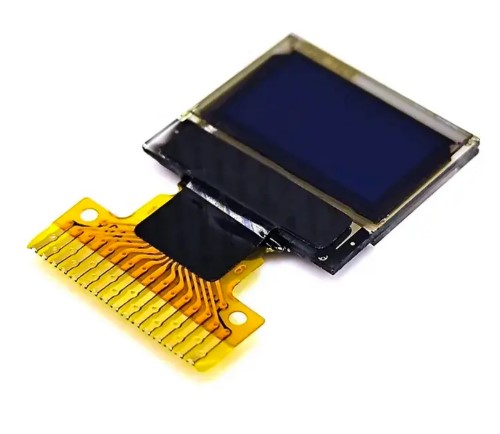Introduction
Luminescent devices, including lighting systems and displays, have become an integral part of modern life. Terbium, a rare earth element known for its unique luminescent properties, plays a pivotal role in the manufacturing of these devices. This exploration explores how terbium sputtering targets are harnessed to create luminescent wonders for various applications.
Luminescent Magic of Terbium
Terbium (symbol Tb, atomic number 65) is a soft, malleable, and silvery-white element in the lanthanide series, commonly known as rare earth elements. Tb is notable for its luminescent properties. When exposed to certain external stimuli, such as UV light or electrical currents, terbium ions become energized, absorbing and storing energy temporarily. As these ions return to their stable state, they release this stored energy in the form of visible light. Such luminescence finds applications in fluorescent lamps, LED lights, and color television screens.
Additionally, Tb exhibits magnetic behavior, making it valuable in crafting magnetic alloys. Tb also has a relatively high melting point of approximately 1,356 degrees Celsius (2,473 degrees Fahrenheit). However, it is susceptible to oxidation when exposed to air and moisture, requiring careful storage practices. Therefore, this rare earth element plays a pivotal role in various industries, including lighting, displays, nuclear technology, and optical devices.
Related reading: An Overview of Terbium Sputtering Targets
Luminescent Applications of Terbium Sputtering Targets
–Phosphors for Lighting
Tb sputtering targets are used to produce phosphors, essential components in fluorescent lamps, compact fluorescent lamps (CFLs), and light-emitting diodes (LEDs). These phosphors, often referred to as “terbium-activated phosphors,” convert ultraviolet or blue light emitted by the lamp into visible green or blue-green light. This process significantly enhances the energy efficiency and color quality of lighting devices.
–Display Technologies
Terbium is a key player in the development of high-quality display technologies. Its luminescent properties are harnessed in cathode ray tubes (CRTs), liquid crystal displays (LCDs), and organic light-emitting diode (OLED) displays. In CRTs, terbium-activated phosphors produce vibrant and sharp images, while in LCDs and OLEDs, they contribute to vivid and energy-efficient color reproduction.

–X-ray Imaging
Beyond lighting and displays, terbium is employed in medical and industrial X-ray imaging. Terbium-activated phosphors are used as scintillators to convert X-ray radiation into visible light, enabling high-resolution imaging for medical diagnostics and materials inspection.
–Beyond Displays
Terbium’s luminescent properties extend beyond displays. It is also used in optical devices like lasers and scintillation detectors. In lasers, terbium ions can amplify and emit coherent light, contributing to the development of efficient and powerful laser systems. In scintillation detectors, terbium-based materials help detect and measure ionizing radiation, making them invaluable in medical imaging and radiation monitoring.
Benefits of Terbium Sputtering Target Applications
Thus, terbium sputtering targets play a crucial role in the creation of luminescent devices, offering benefits in the realm of energy efficiency and environmental impact:
- Enhanced Energy Efficiency: Tb-activated phosphors excel in converting ultraviolet or blue light emitted by lamps into visible green or blue-green light. This conversion process significantly boosts the energy efficiency of these lighting devices.
- Extended Lifespan: Luminescent devices incorporating terbium-activated phosphors have longer operational lifespans. The durability of these phosphors translates to fewer replacements over time, resulting in less material waste and reduced maintenance efforts.
- Diminished Heat Generation: Tb-activated phosphors generate less heat during luminescence compared to traditional lighting technologies. This characteristic contributes to a more comfortable and cooler lighting environment. Additionally, it decreases the strain on cooling systems and air conditioning in various applications.
- Environmental Conservation: The energy efficiency and extended lifespan of terbium-activated phosphors reduce the overall environmental impact associated with lighting. Lower power consumption translates to fewer greenhouse gas emissions and a decreased carbon footprint.
As technology advances, terbium-based luminescent devices continue to evolve. Researchers are exploring new applications in areas such as solid-state lighting, quantum dots, and advanced display technologies. Terbium sputtering targets remain at the forefront of these innovations, enabling brighter, more energy-efficient, and environmentally friendly solutions.
Conclusion
In a word, terbium sputtering targets are the luminescent catalysts that illuminate our modern world. From energy-efficient lighting to vibrant displays and cutting-edge imaging, terbium’s unique luminescent properties continue to drive innovation, making our lives brighter, more colorful, and environmentally responsible. Tb sputtering targets are available in various forms, purities, and dimensions on our website. If you are interested, please feel free to send us an inquiry.




